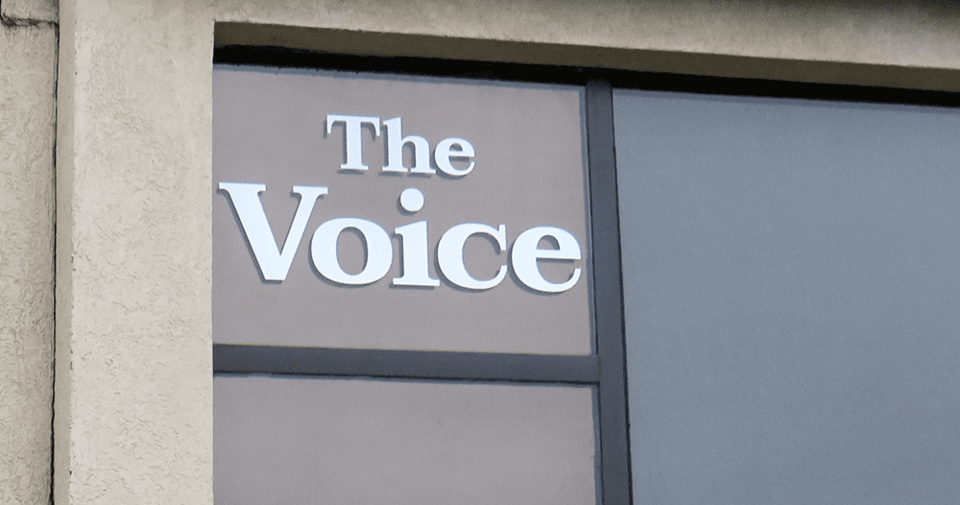A message from the publisher
In a free market system, the making of profit determines whether a business continues to thrive. For some time now, as the world has gone increasingly digital, capitalism has not looked favourably upon the print media industry. The Voice is unfortunately no exception. Next week’s issue of the paper, our last for 2022, will also be our last in print.
But do not lament and rend your garments! We are moving 100 percent online!
In fact, we’re going from the weekly Voice to the daily Voice, with stories posted each day rather than at the end of the week, as has been our practice until now. All staff and freelancers are staying. Our website will be entirely redesigned come January, and will feature a much broader scale of coverage. I’m actually feeling quite positive about this change.
Technology moves on
How did we get here? As they say, follow the money.
The start of print journalism’s economic slide traces way back to Craig’s List, the online classified site, and eBay, both started in 1995. Craig’s List really took off in 2000, spawning countless imitators, such as kijiji, websites where it was free to place an ad.
It may be hard for anyone under 50 to believe, but at one time it could cost a small fortune to place a classified ad in a newspaper. A dollar a word was pretty much minimum, and went up from there the bigger the newspaper and circulation. You wanted to sell a car or rent out an apartment? $50 please—and this was back when $50 bought a lot more than it does today. Newspapers were the only game in town, and the revenue from classifieds was astonishingly huge.
More recently, longtime Voice readers will remember the golden era of weekly General Motors full-page ads, and other national brand ads, with some regional banks and big box stores thrown in. While these ads had already started to dribble away with the rise of social media, what really brought the party to an end was Covid. GM pulled their local ads in early 2020 and never came back. Ditto for other national brands.
This summer our provincial community newspaper association, which brokered such ads, effectively threw in the towel, announcing the layoffs of account managers as well as the CEO who had been hired to try to get advertisers back in the door.
Then came inflation. We’ve seen steady rises in newsprint costs over the course of the pandemic, particularly this year, with another increase scheduled for January. As newspapers in Ontario have stopped printing, the printing companies themselves are closing. We’ve been through three printing plants in the last five years. (This has ironically turned the printing business into a seller’s market. But not for much longer, one suspects.)
What has helped sustain us over these three pandemic years has been first and foremost our loyal, local advertisers, followed by federal and provincial Covid-related advertising, the federal CEBA small business Covid loan program, some governmental and other grants, as well as many contributors working for little or no money, and volunteers distributing the paper in rural areas. But now the grants and Covid ads have largely dried up, and there’s talk of a recession on the horizon.
We also benefited enormously, as I mentioned in this space several weeks ago, from the generosity of one Voice shareholder in particular, Sandra Warden, who loaned the paper a considerable sum prior to my arrival in 2016. Up to the start of Covid we were able, bit by bit, to pay off the majority of this loan. When Sandra passed away in September, the remaining balance was forgiven at her request, a final act of generosity from an incomparably wonderful woman, a former Kinsmen Citizen of the Year, who was content to do her good works out of the limelight.
Over these years we have steadily made cuts in expenses—greatly reducing staff, moving to a smaller office, cutting our bulk delivery costs, and eliminating some costly rural postal delivery routes. In short, at this point there’s little left to cut.
Despite these circumstances, by the way, I hope you’ll agree that the last seven years have been some of the Voice’s best. From zero before 2016, we have won 35 provincial and national journalism honours for our reporting through 2021, with 2022’s work now being judged. I’d say that’s pretty impressive for any paper, especially for one our size.
Newspapers across Canada and the US are all facing the same pressures. In Atlantic Canada, one daily chain has stopped publishing on Mondays, and the Postmedia group has also stopped publishing on Mondays in several provinces. Each day brings more news of cutbacks and closures. Like it or not, the news business is now mostly online, not in print. We are the carriage and buggy manufacturers of 100 years ago, stubbornly hanging on in 1922 in the face of those newfangled motor cars.
Today’s reality
The truth is that online news is more convenient. It’s faster. It’s generally less expensive for advertisers, and it’s less costly for publishers. Another truth is that most news consumers stopped paying for print some years back. In our house, we haven’t subscribed to a print newspaper since we had our last landline—nearly 20 years ago. All of our subscriptions are online.
There is now an offer before the remaining 50 community shareholders who founded the Voice in 1997. A long-established Canadian online community news company, which already has a presence in southern Ontario—including in Niagara— is looking to invest in our website, to create an exponentially better online presence. I will have an update for you next week on the progress of this proposal.
Either way, come January 1, the same journalism you’ve appreciated in print, written by the same staff, will be available to you online, anytime.
As ever, thank you for reading the Voice.



